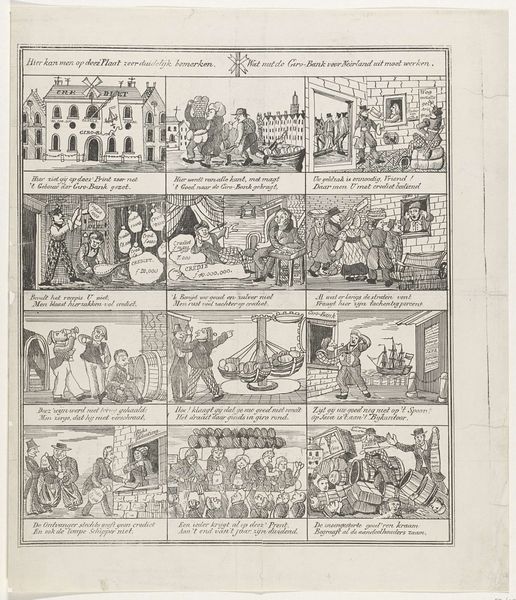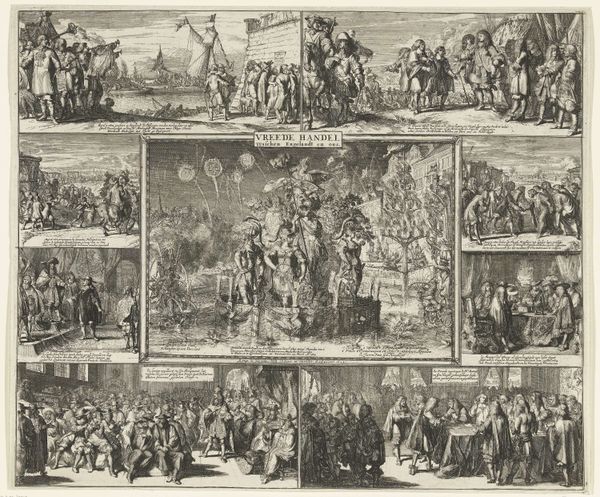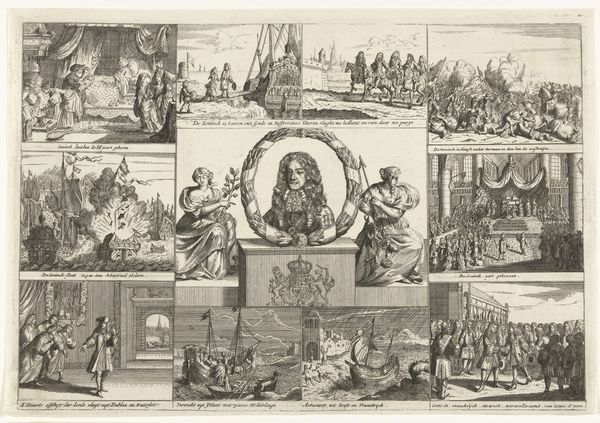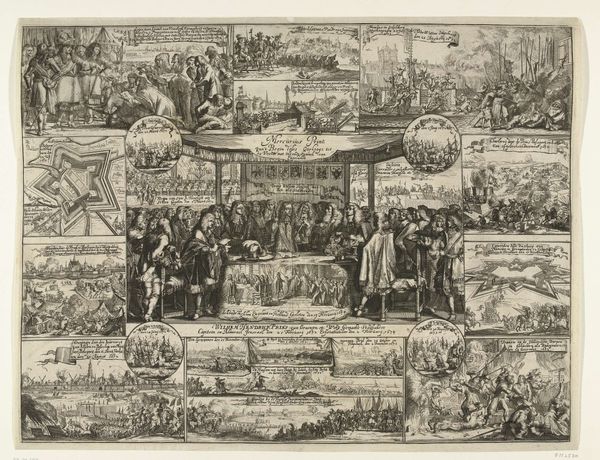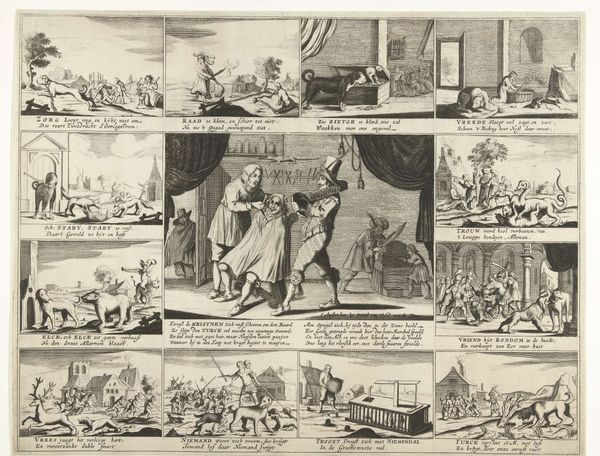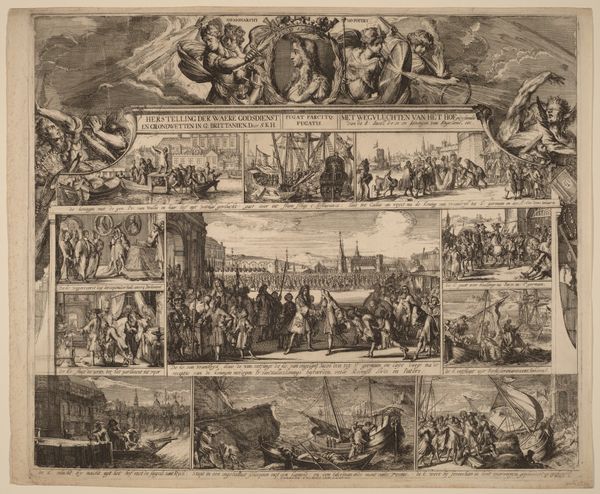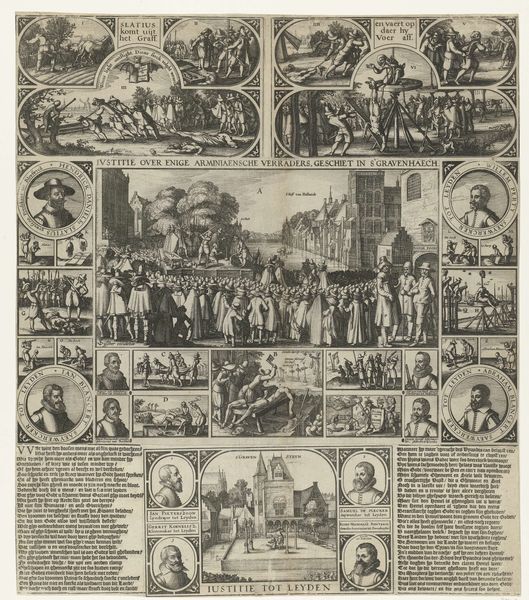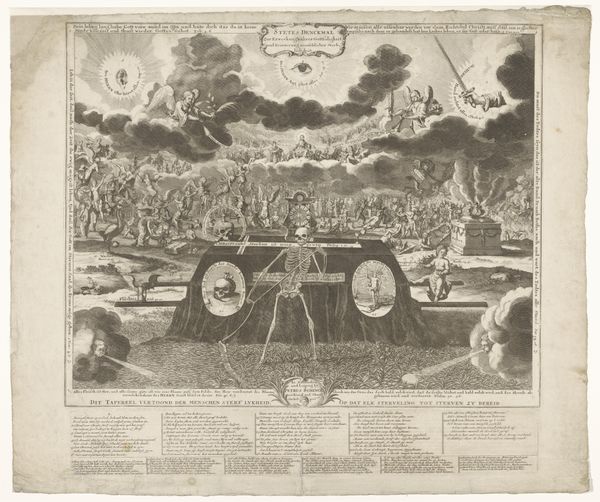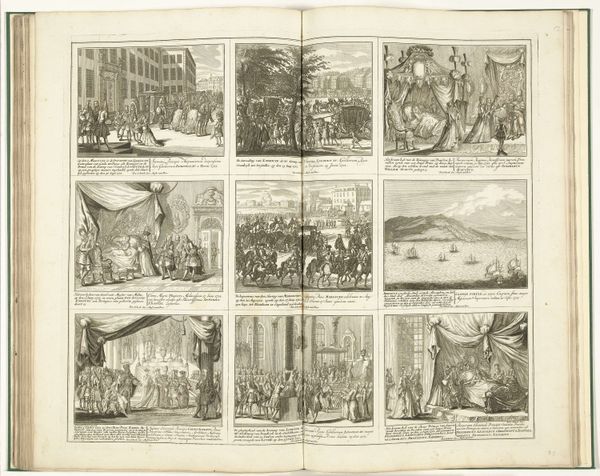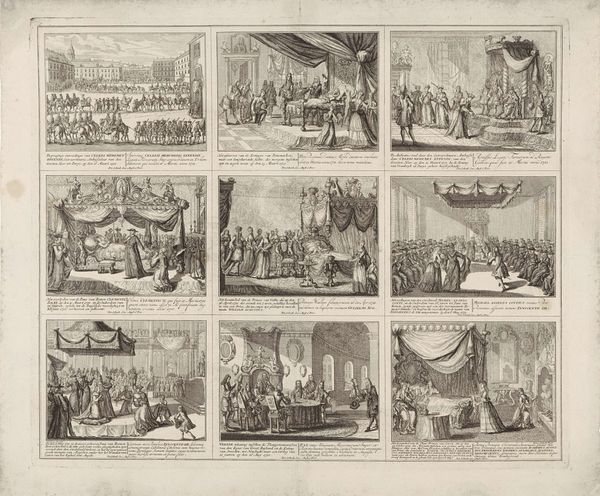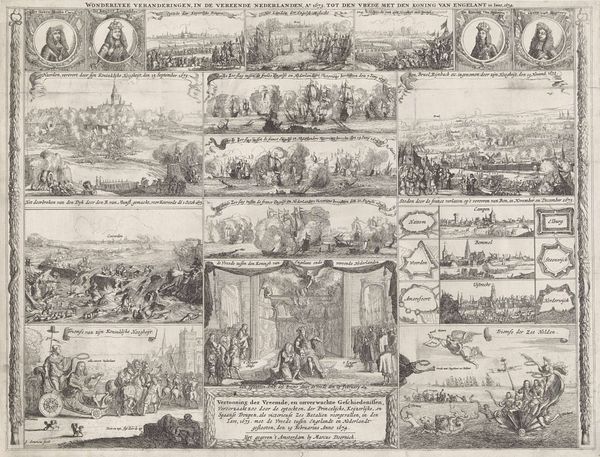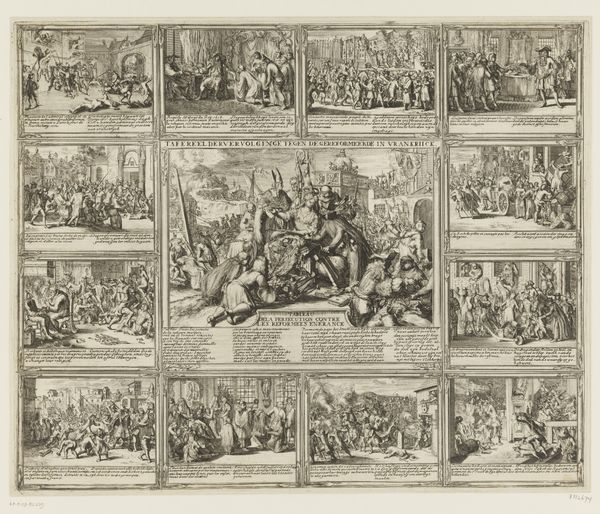
print, engraving
#
baroque
# print
#
old engraving style
#
cityscape
#
genre-painting
#
history-painting
#
engraving
Dimensions: height 413 mm, width 522 mm
Copyright: Rijks Museum: Open Domain
Curator: Wow, what a whirlwind of detail! This print, commemorating the Peace of Breda in 1667, feels almost… anxious, crammed with scenes vying for attention. It's like the artist couldn’t decide what aspect of this momentous event to focus on, so they included everything. Editor: Indeed. Known as "Vrede van Breda, 1667", this engraving presents us with more than just a treaty. Look closer, and you see the power dynamics at play—the Anglo-Dutch Wars, the shifting global dominance, the celebratory yet cautious mood of the time. These were no simple agreements. Curator: That table in the center, around which the delegates are gathered—it's the calm eye in a storm of naval battles and triumphant fireworks. Almost theatrical, the whole scene has the staged formality I find in Baroque art of that era. Is that wishful thinking, to imagine peace in such a tempestuous historical moment? Editor: It's tempting to see that central scene as harmony, but remember, peace is always negotiated from positions of power. This engraving underscores that: a display of power intended as a statement to other empires as much as celebration within Breda. What are the conditions that make such a treaty possible and for whom? These are essential questions to consider as you contemplate such artwork. Curator: Still, I find a poignant, perhaps naive hopefulness in the cherubs floating above the central table, their divine blessing a visual prayer for lasting accord. The city celebrating below, there’s a collective dream embedded in the very material of the engraving— the cross hatching and burin strokes trying to convince us of a future harmony. What does it mean when even war can appear, rendered in painstaking monochrome, undeniably beautiful? Editor: I would rather focus on the price paid to attain the harmony or lack of said harmony by various parties involved and in which territories the events played out and whether they represent the point of view from all parts. The lens with which you see, and the stories from those whose voice did not prevail must take prevalence as you contemplate history as a social and cultural marker in today’s world. It’s vital not to aestheticize complex conflicts when encountering images from the past. Curator: A fair point. Perhaps the beauty is a form of seductive propaganda then, designed to smooth over the deep cracks of conflict and inequity. Even so, I will continue to search in the image, where I still can imagine myself hoping. Editor: Always a worthy practice for social change and in historical retrospectives of any era.
Comments
No comments
Be the first to comment and join the conversation on the ultimate creative platform.

